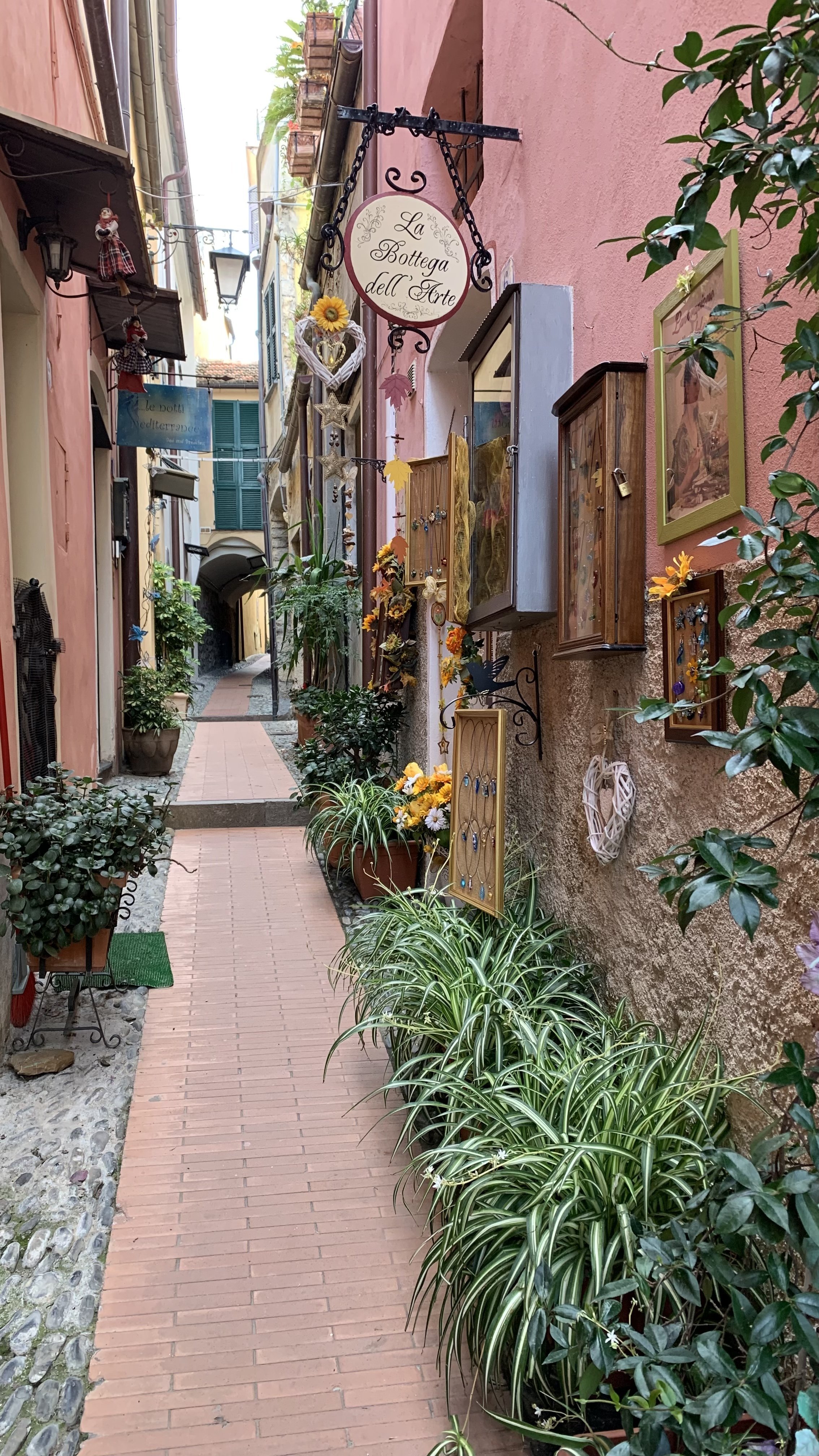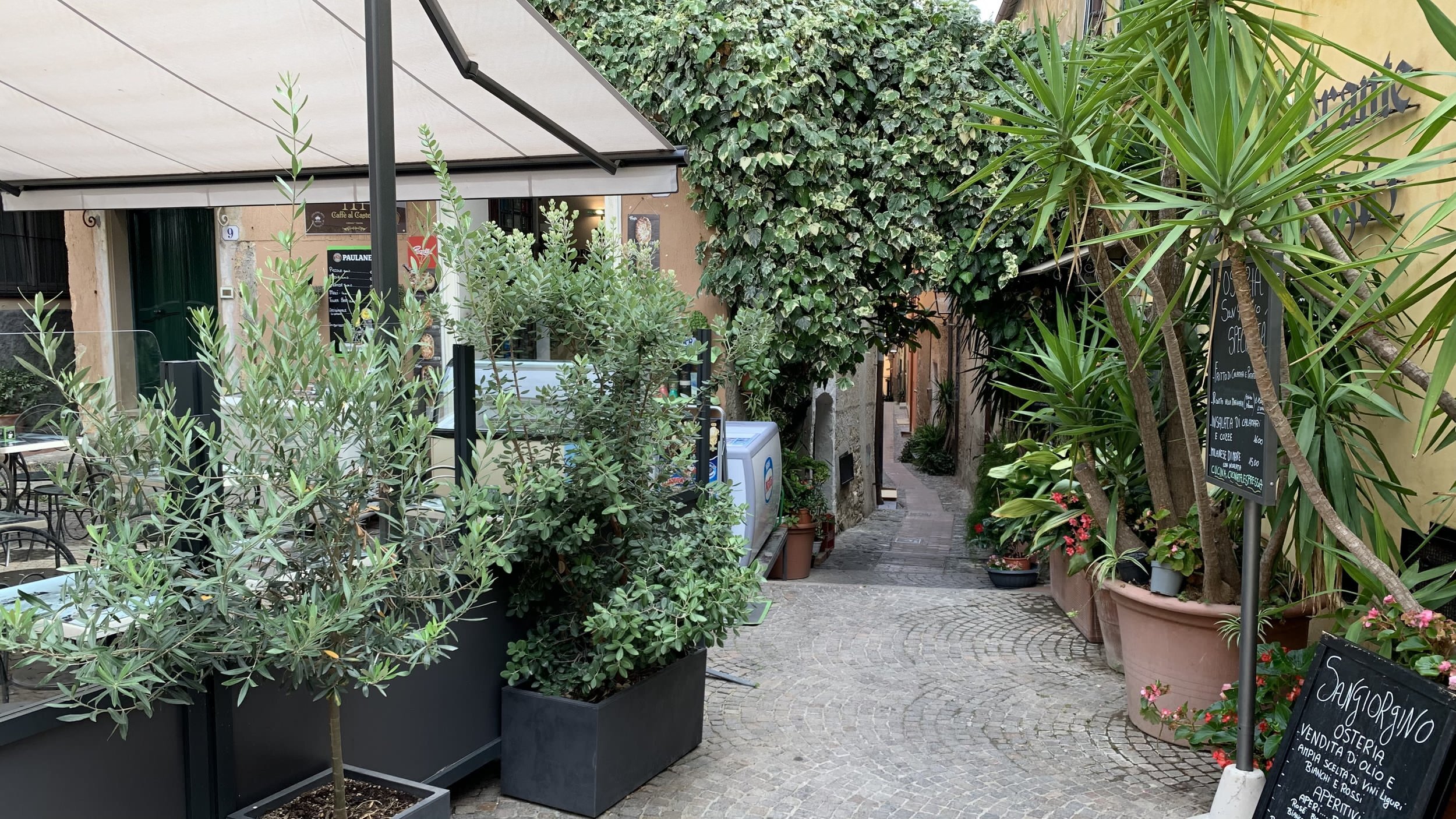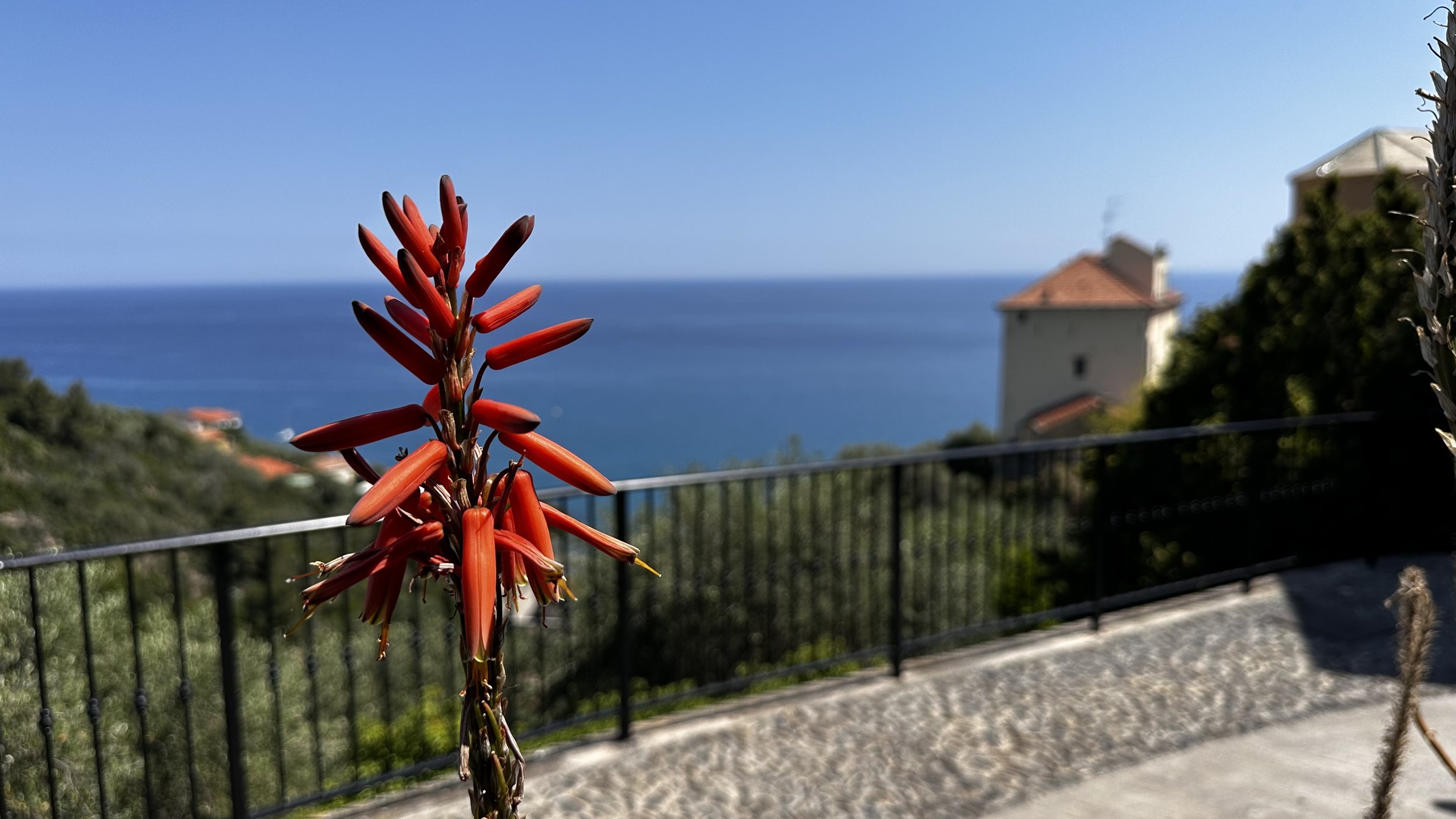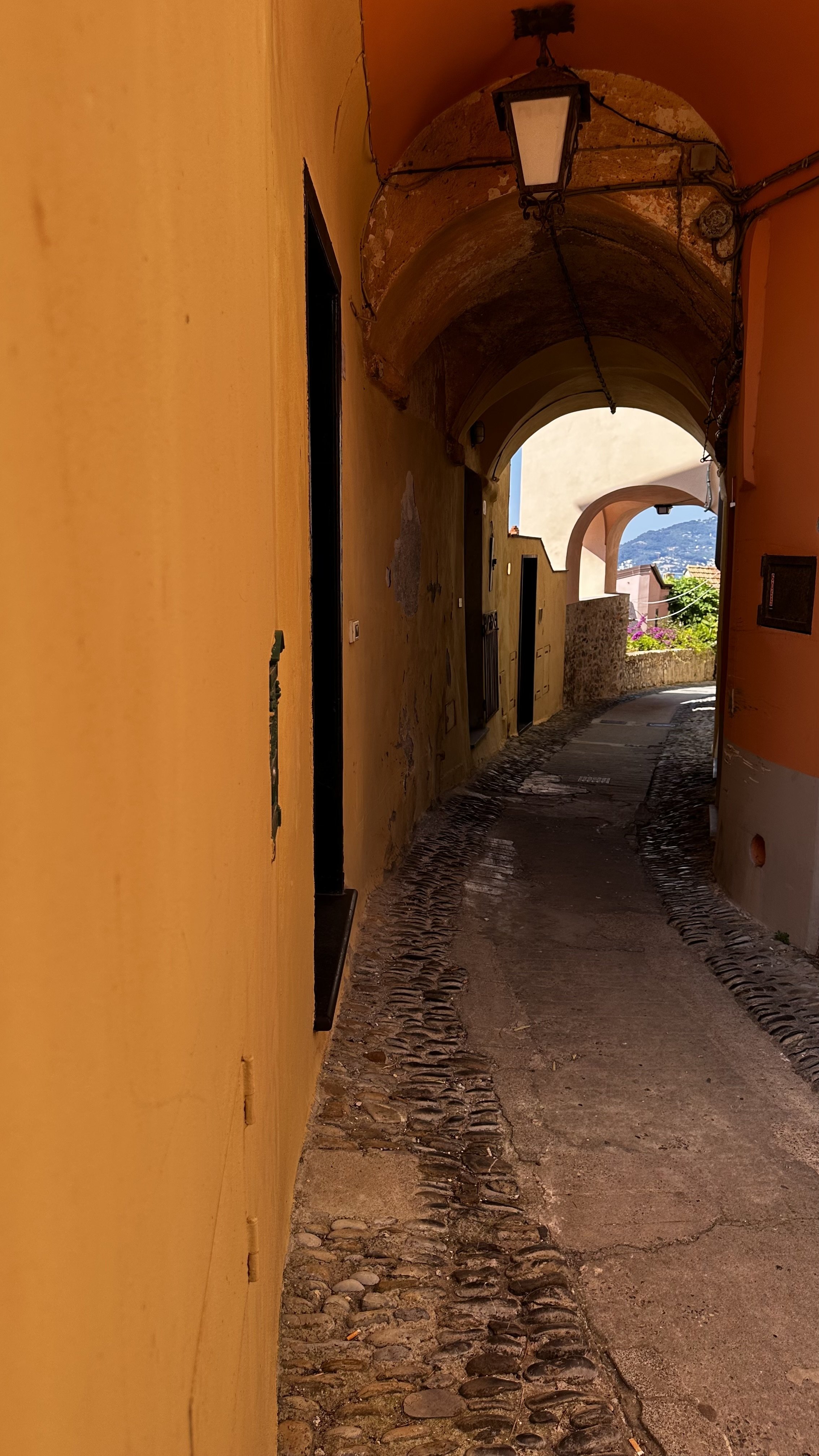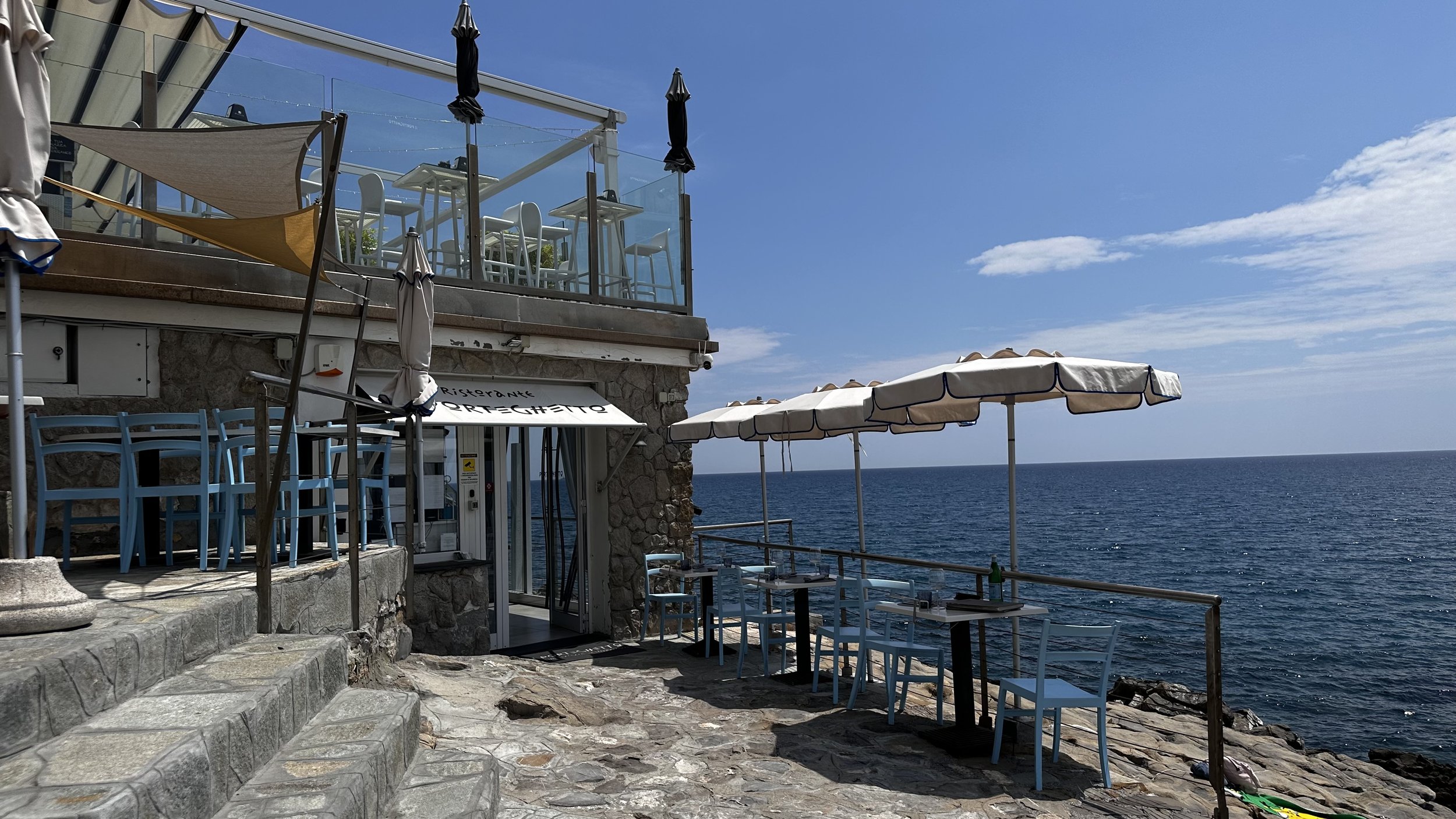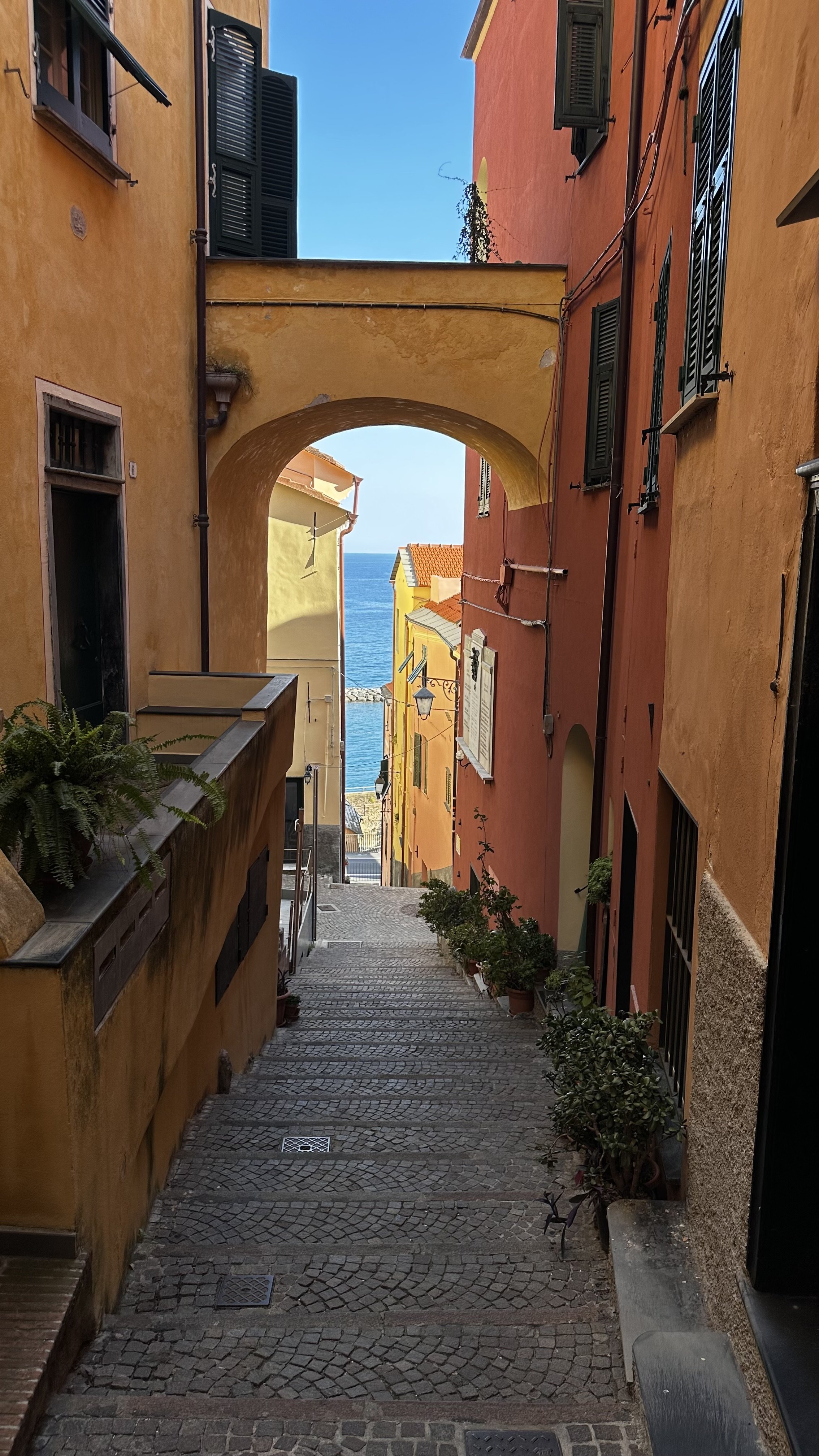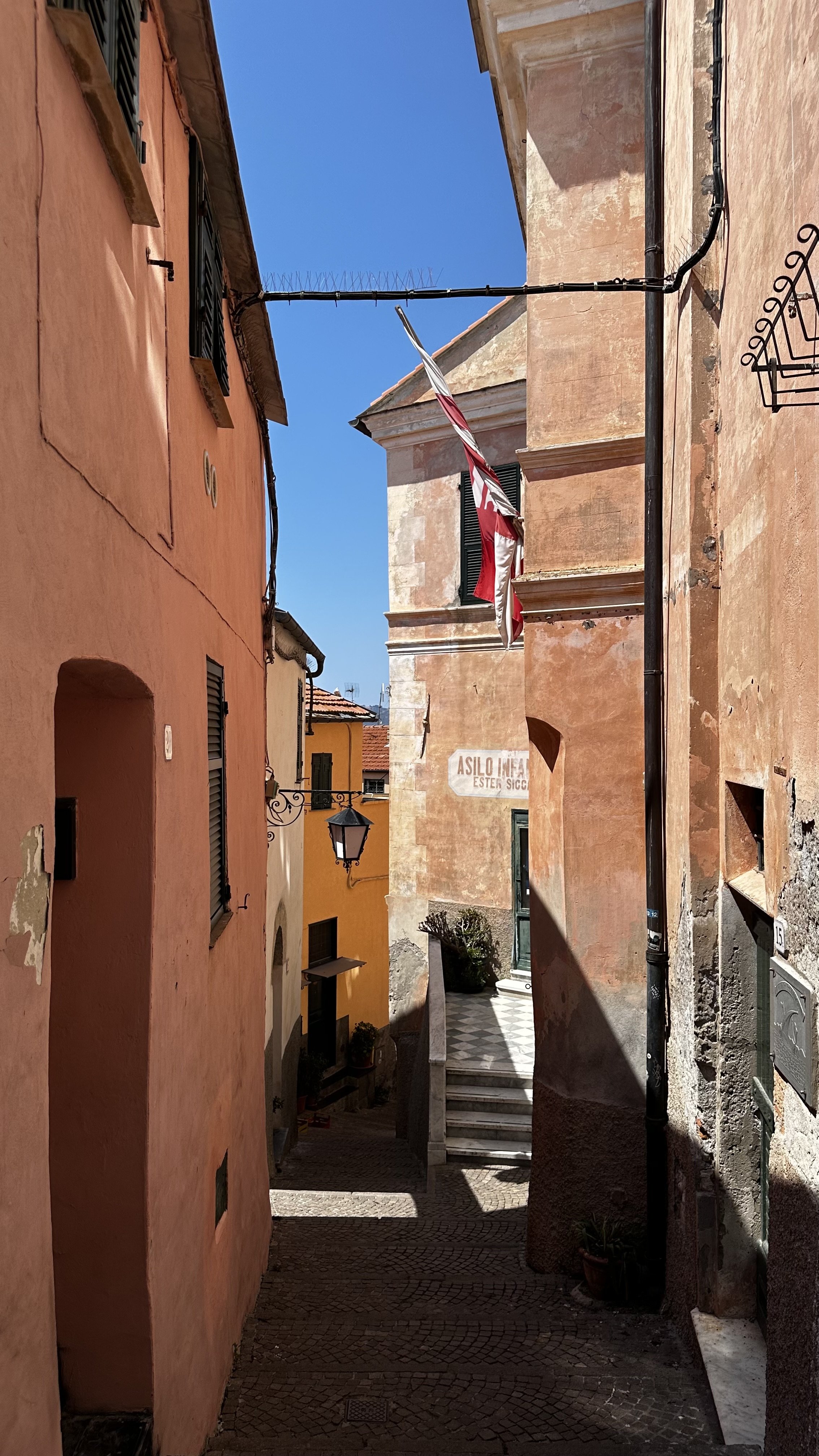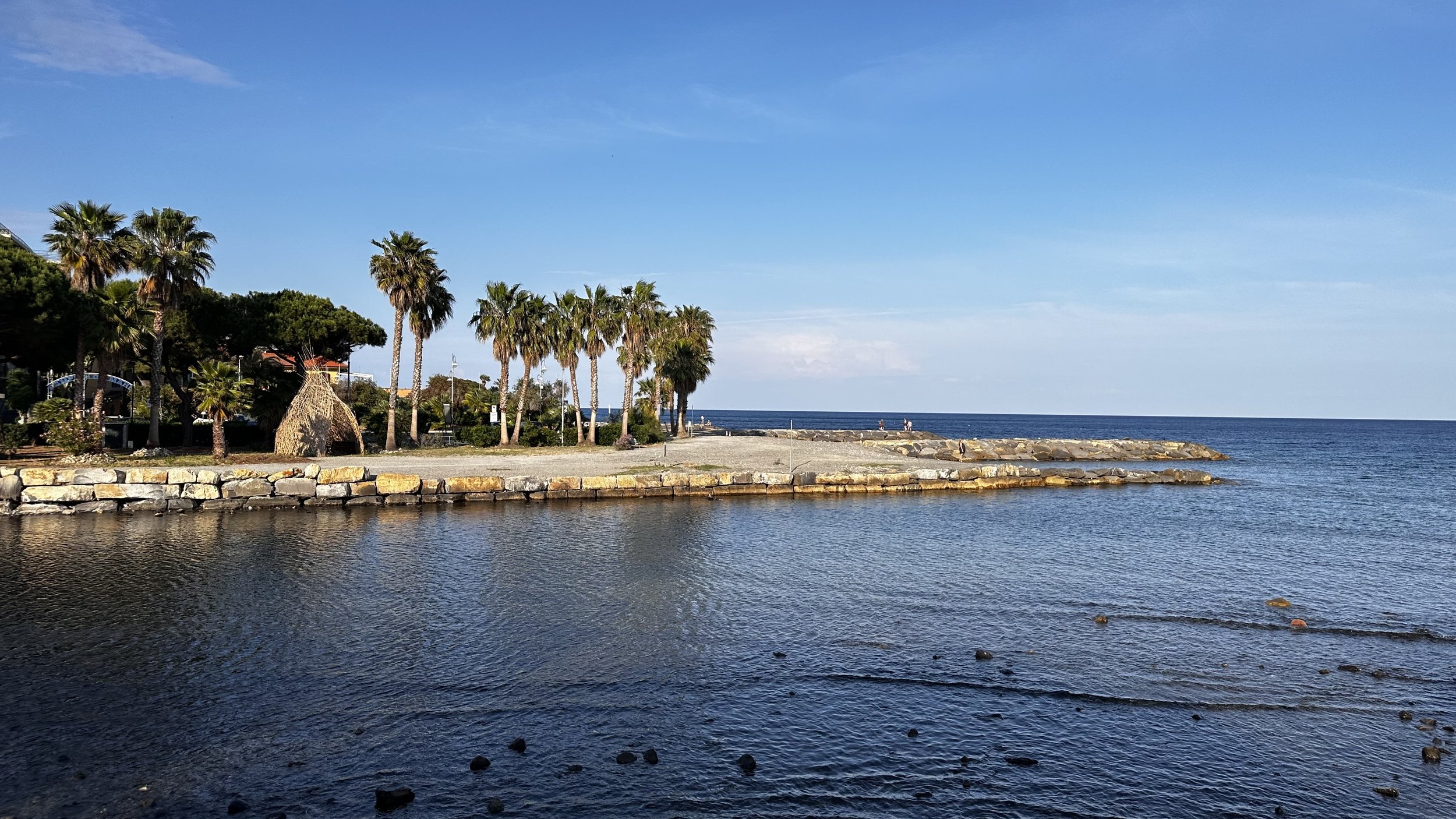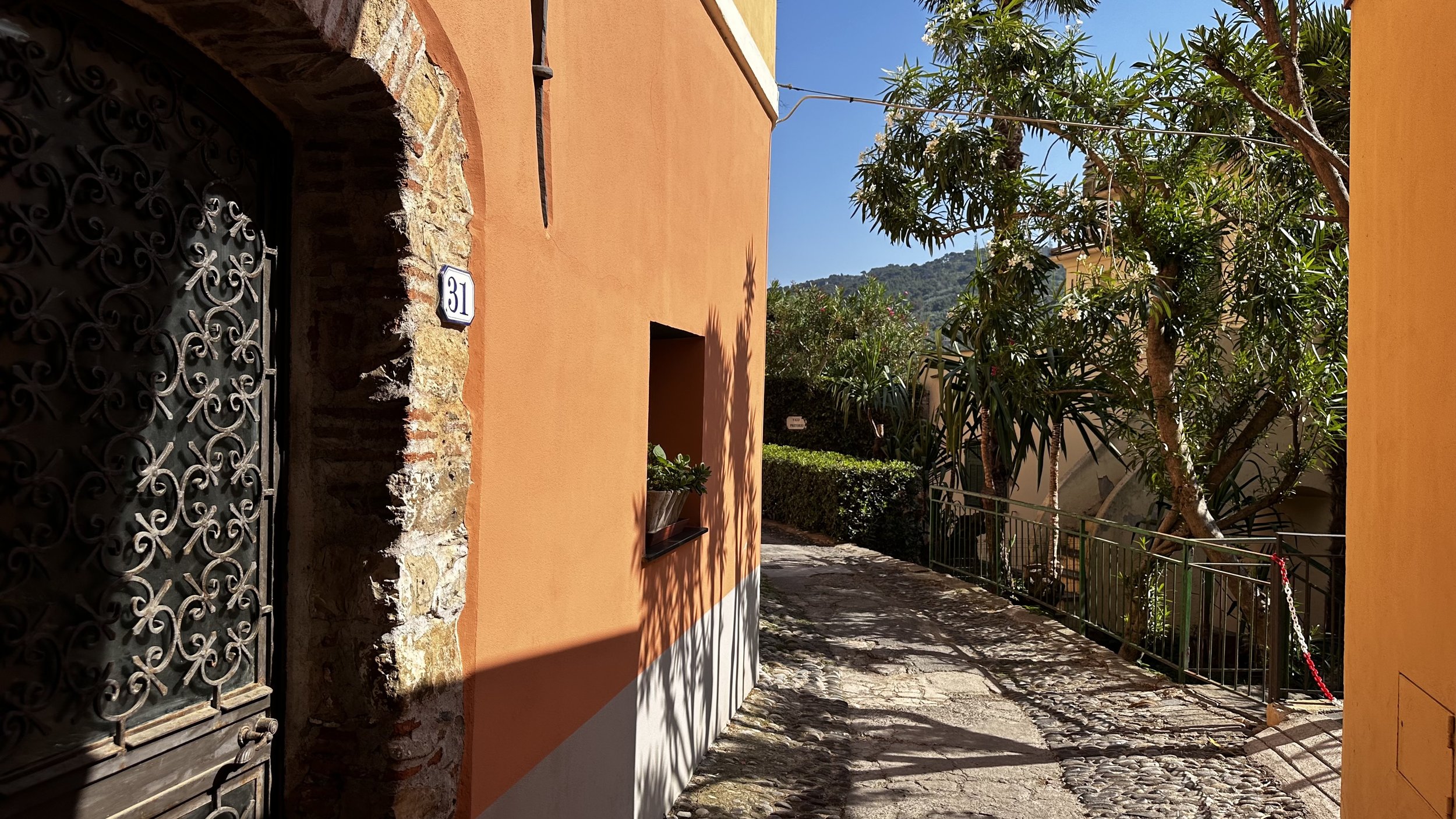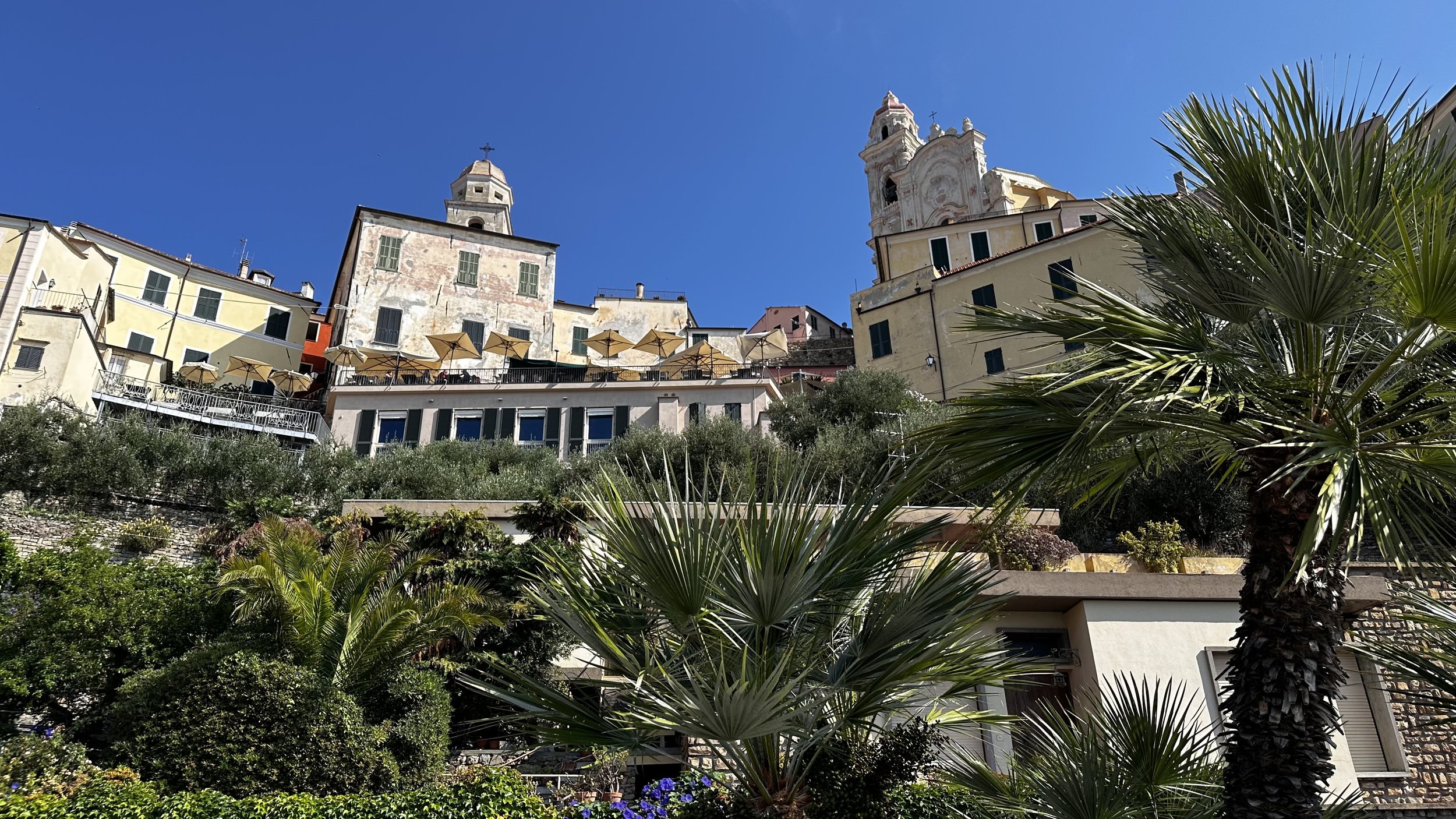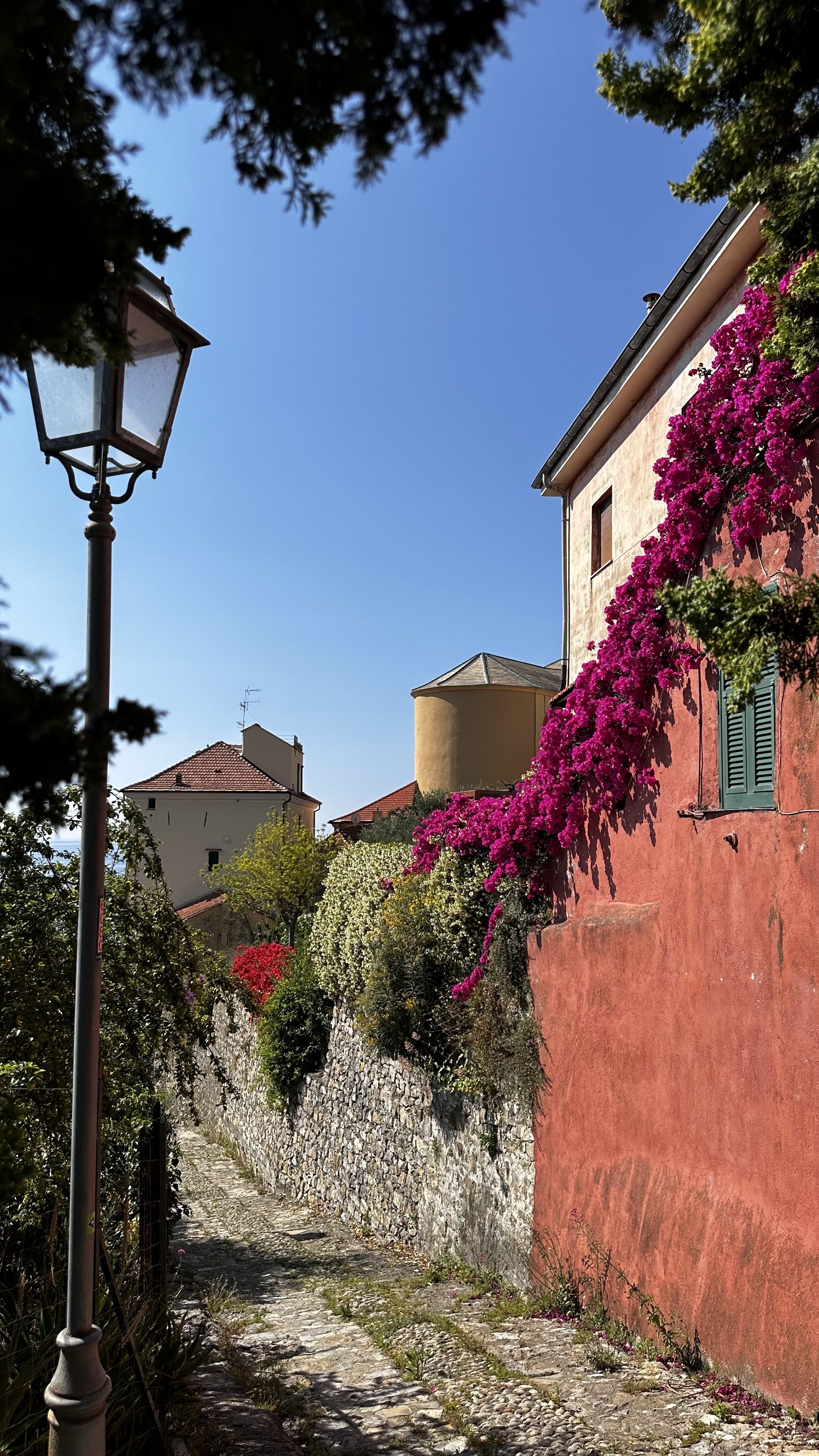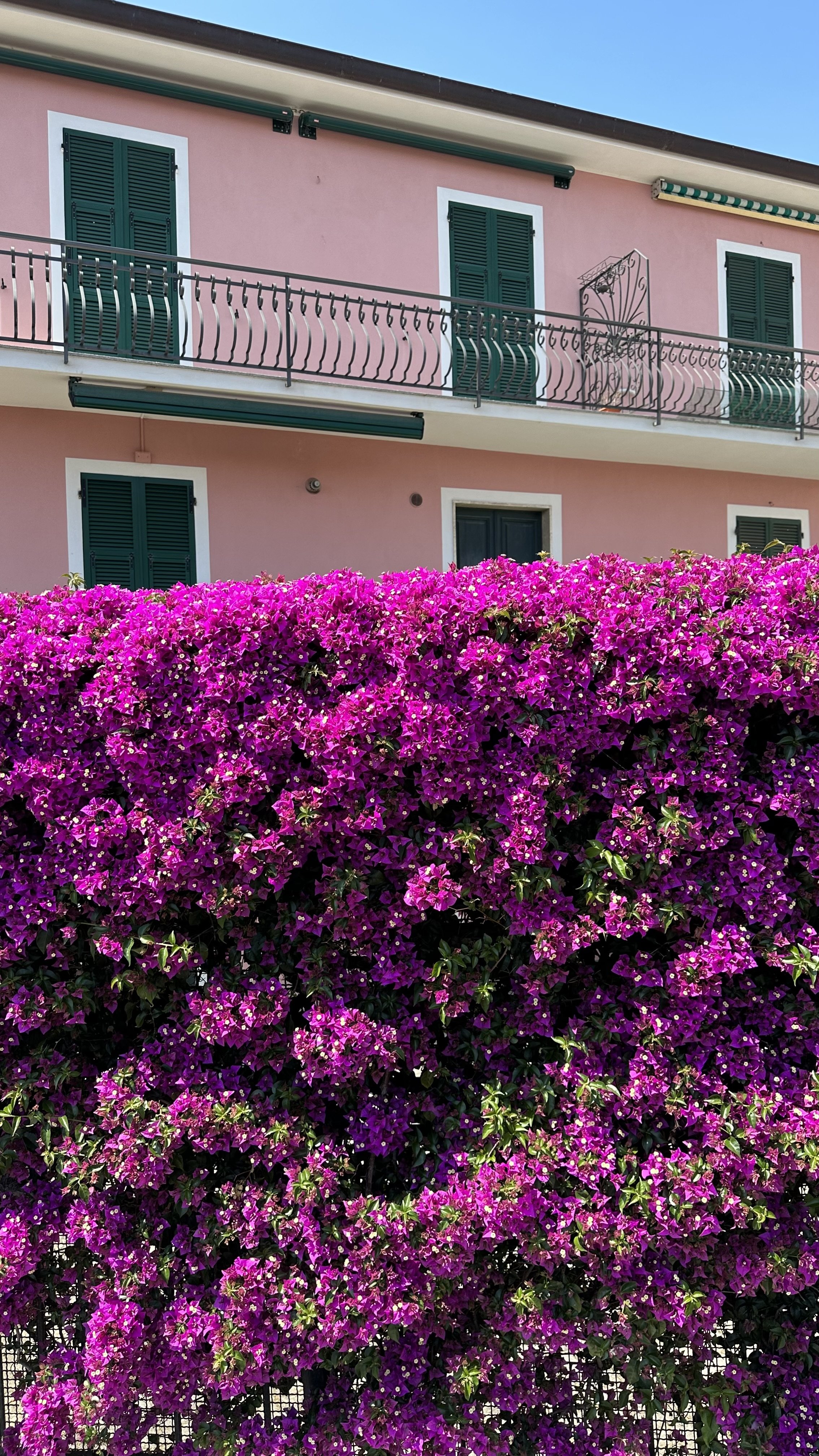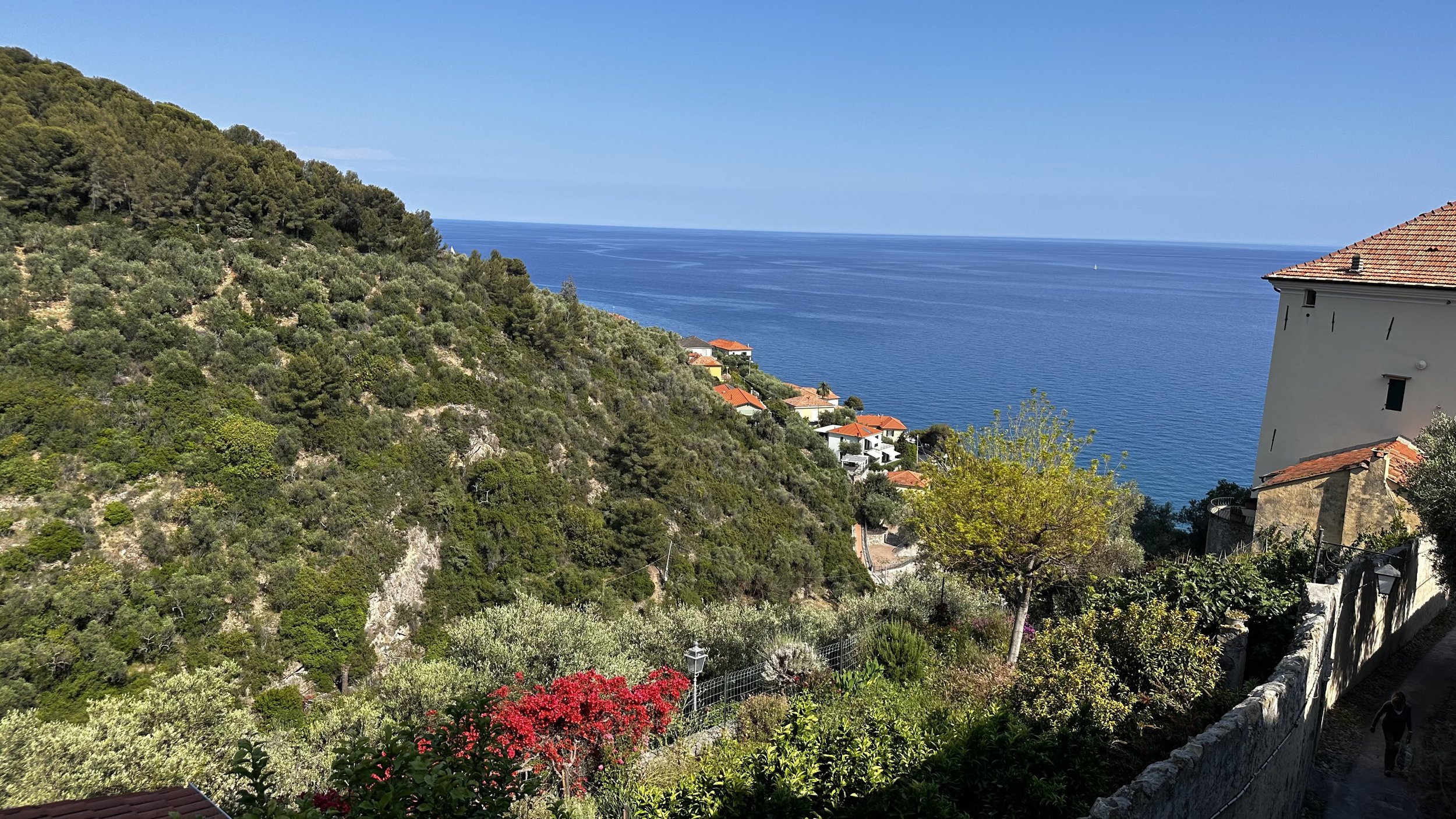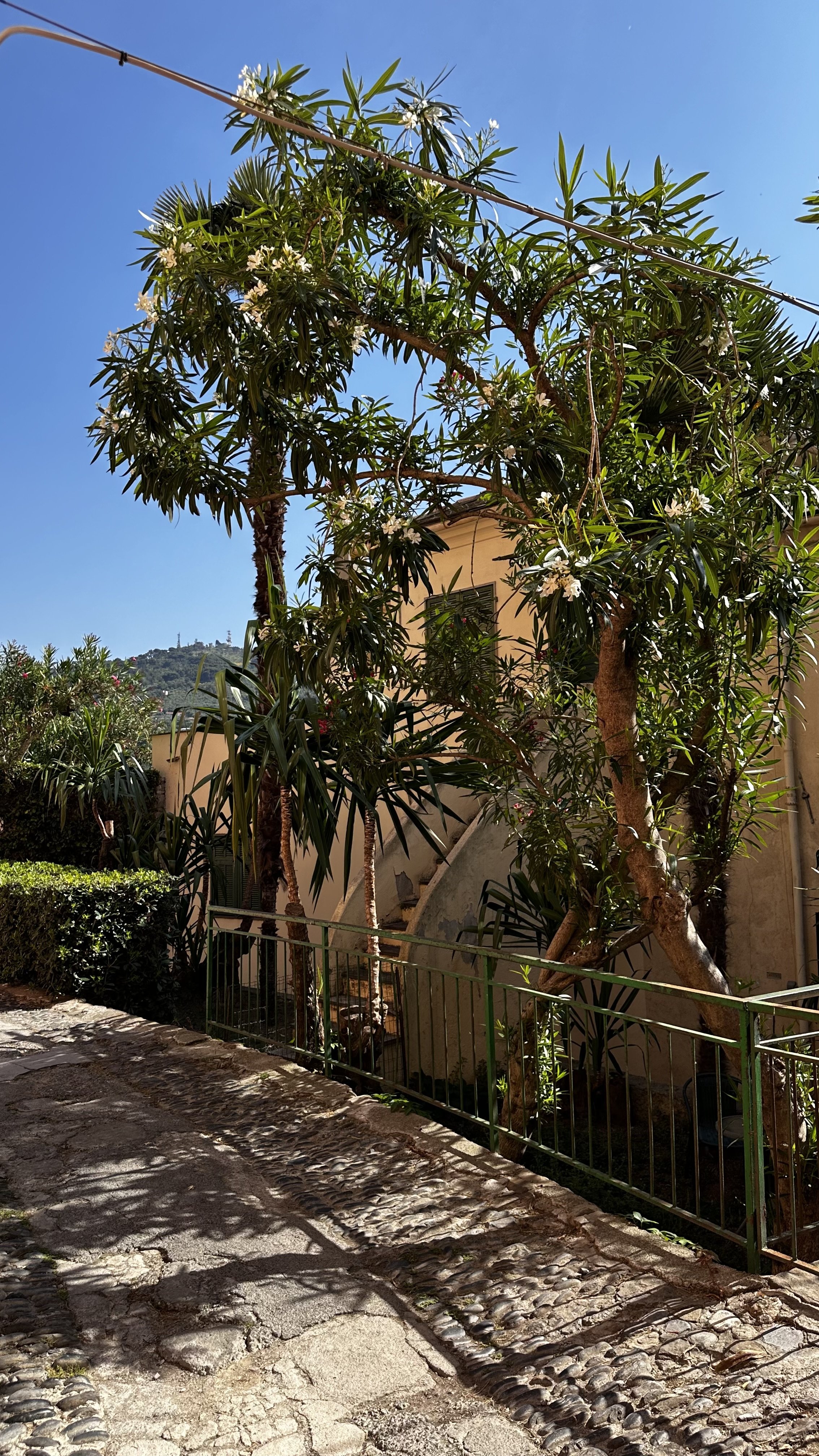A blog from the road. Sharing photos, videos and stories from motorhome trips and foreign lands.
Land Blog
Morning Commute on a Cloud Carpet
RV life during work week also means to pick the best route for the morning commute. I picked one with zero traffic jams, in fact: with no traffic at all. Instead: a cloud carpet.
Oberegg view towards Austria on my morning commute
Sunrise above cloud carpet in the Appenzell mountains.
Some details about the region
Oberegg, with a population of just over 1800, can be described as a political and geographical unicum. During the turmoil of the religious war, the people of Oberegg joined the Catholic Innerrhoden and were separated from the rest of the canton as an enclave. This alone would not do justice to the term "unique", as the district is once again divided into three separate parts. Oberegg attracts visitors with its lively village center and unique views - both of Lake Constance and of the Alpstein - from the surrounding hills. It is rightly regarded as an ideal starting point and destination for extensive mountain hikes, and various refreshment stops in and around the village provide for physical well-being.
History
A Late Roman coin found near the hamlet of Heilbrunn is the earliest evidence of human presence in what later became the district of Oberegg. The actual settlement as the last region of the Appenzellerland took place mainly in the 12th and 13th century. Only the hamlet of Büriswilen bears an early medieval name from the Carolingian period. The settlers came mainly from the Rhine Valley, from the farms of Bernang, Marbach and Altstätten, and to a lesser extent from the Goldach Valley. They settled in groups of families on individual farms, which they had previously cleared of forest. The new settlers were subjects of the Abbot of St. Gallen, to whom they had to pay taxes. Next to them were the secular lords of Rosenberg-Berneck and the bailiffs of Altstätten. The latter built the castle of Hoch-Altstätten at the turn of the 12th and 13th centuries on the territory of today's Oberegg.
As a result of the Appenzell wars at the beginning of the 15th century, the area of the later district of Oberegg became part of the Rhode Trogen and thus of Appenzell. However, taxes continued to be paid to the Rhine Valley - the last redemption of these tithes did not take place until the end of the 16th century - and church attendance continued to go there. In 1428, the Count of Toggenburg attempted to conquer Appenzell by force in the area of Altstätten. In this context, nationalist historiography speaks of a "Battle of Honegg" on the territory of what was later Oberegg. Appenzell's borders with the Rhine Valley were finally documented by the Abbot of St. Gallen in 1465. The emergence of a political self-confidence in the later Oberegg area within the Rhode Trogen - namely the areas of Oberegg and Hirschberg - can be traced back to the second half of the 15th century. In 1470, a letter of right of way was sealed by a "Nachpurschaft am Hersperg" [Hirschberg]. The name Oberegg appears for the first time in 1535 as a hamlet name in a household census.
In 1525, because of the Reformation in Appenzell, the "Kirchhöreprinzip" - the principle that every Rhode had to choose a confession - was introduced, and the Rhode of Trogen professed the Reformed faith. In Oberegg-Hirschberg, however, many families remained in the old faith because they were members of the parishes in the Rhine Valley. When the land of Appenzell was divided in 1597 into the two half-states of Inner and Ausserrhoden, the Catholic properties in the areas of Oberegg and Hirschberg, now called half-states, were assigned to Appenzell Innerrhoden, while the Reformed properties were assigned to Appenzell Ausserrhoden. The result was a disjointed territorial patchwork. This unsatisfactory situation continued into the 19th century and led to a number of border disputes between the half-estates.
In 1654, the construction of a parish church for the Catholic inhabitants of Oberegg-Hirschberg began in the hamlet of Oberrickenbach. The hamlet was located on the territory of the half-rule of Hirschberg, and as a compromise, the new village was given the name of Oberegg. In 1658, with the consecration of the parish church, the parish was also established. A chaplaincy was established shortly thereafter. The parish was originally located in the Eschenmoos chapel, but soon moved to the village. The chapel of St. Anton, built at the beginning of the 18th century, also belongs to the parish. Until the 19th century, the parish priest and the chaplain were in charge of the school.
During the Helvetic era (1798-1803), Oberegg and Hirschberg were added to the district of Wald, while the hamlets of Kapf and Boden became part of the district of Oberrheintal. Both districts were located in the newly created canton of Säntis. The majority of the people of Oberegg were against the reorganization, which led to a refusal to swear an oath to the new constitution. As a result, Herisau executioners disarmed the people of Oberegg. The oath was then taken. After the end of the Helvetic period, Oberegg and Hirschberg again became part of the canton of Appenzell Innerrhoden as Halbrhoden. During the period of mediation (1803-1815), the dispute over the border between Inner and Ausserrhoden resurfaced in the area of Oberegg and Hirschberg. In spite of an arbitration tribunal set up by the Tagsatzung, it was not until after the founding of the Swiss Confederation, and after years of renewed negotiations under the supervision of two federal mediators, that the definitive borders were finally established by an arbitration ruling of the Federal Council in 1870. The district of Oberegg in its present form was created in 1872 by the merger of the half-cantons of Hirschberg and Oberegg under a new cantonal constitution.
Oberegg experienced a period of prosperity in the second half of the 19th century. The period between the end of the 19th century and the First World War was a founding period, during which most institutions and infrastructures were built or fundamentally modernized. This included the construction of roads, the postal system and electricity, as well as associations, the public sector, education and the establishment of two county-level banking institutions. Together with political autonomy, this led to a pronounced autonomy that was also perceived as such in the collective consciousness. While the first half of the twentieth century, a period of crisis, did not bring about any far-reaching changes in this respect, the second half of the twentieth century saw an increase in cooperation with regional neighbors and the transfer to the canton of competencies that had previously been perceived as independent. Due to its status as an exclave of Appenzell Innerrhoden, Oberegg is still perceived as a "special case".
Cervo, Liguria (Italy) Impressions
I have come here for over twenty years. For the fantastic campground where I can even park the camper beachside, the sunrises in the sea, the surrounding towns like Diano Marina, for the food and the pleasant people.
Time and again this little gem in the midst of the Ligurian Riviera fascinates me. It is built on the hillside with steep and narrow alleyways. Artists set up camp here, there are classic music festivals in the summertime and the Centro Storico di Cervo cathedral is a place like no other.
Obviously you can not miss Centro Storico di Cervo cathedral in Cervo. Be it from the street or the sea. It towers impressively above this cute old town.
On the inside Centro Storico di Cervo cathedral is any bit as impressive as from the outside.
It‘s quite a hike uphills through Cervo‘s alleyways. But I cannot get enough of it. There are plenty of bars and restaurants scattered across this town, in alternation with litte art stores and art galleries.
In some of the restaurants you sit in the middle of plants and palm trees that seem to grow out of the buildings.
People certainly live in paradise here in Cervo.
View from top of Cervo down towards the Mediterranean and the Ligurian Riviera.
Cervo, Liguria (Italy) from a distance
It's a ritual of arrival: camp at Camping Lino (on the left) and go up to the peer for this view of Cervo and the Centro Storico di Cervo (Cervo Historical Center).
About Cervo
Less than 10 km from the center of Imperia lies one of the most beautiful villages in Italy. We are talking about Cervo, or as it is often called, Cervo Ligure.
This seaside village has preserved its medieval characteristics throughout the ages and is now a real pearl of Liguria, appreciated both for its architectural beauty and for the unique landscape that surrounds it. In front of us we have the blue and infinity of the sea, while behind it dominates the green of the hills.
Cervo is tied to its history and origins. This is immediately apparent in its medieval architecture and structure.
Even its name has ancient origins. According to some historical sources, it seems that Cervo derives from the ancient Latin word "servant" (literally: to offer services). This word was commonly used in Roman times on signs and above the entrances of taverns to indicate hospitality.
It was not until the late 1500s, with the spread of the vernacular, that Servo was mispronounced as Cervo.
An early settlement seems to date back to prehistoric times. It was inhabited by the Liguri Ingauni, the ancient local population.
In 181 BC. Cervo was conquered by the Roman Empire until its fall in 476 AD.
At the beginning of the 13th century it proclaimed itself an independent municipality by accepting the protectorate of the Republic of Genoa, while in 1330 it became a fief of the Knights of Malta, but only for a short period.
Between the 16th and 17th centuries it was subject to numerous raids by the dreaded Saracen pirates. These landings, followed by violent and brutal raids, were a fairly common phenomenon throughout western Liguria. However, they were more concentrated in Cervo because the pirates were attracted by the coral trade. In fact, coral fishing in the seas of Sardinia and Corsica was the main activity of its inhabitants.
The historical center has remained unchanged for centuries and can be visited only on foot, walking along the narrow streets that rise from the sea to the promontory on which rises the majestic Church of St. John the Baptist, also called "dei Corallini" because it was built thanks to contributions from coral fishermen.
The church was built between the 17th and 18th centuries and was designed by the architect Giobatta Marvaldi. The style of the façade and the opulent interior, adorned with works and marbles, is baroque. It is a good place to start your tour of Cervo.
Leaving the church and turning right into via Grimaldi-Salineri, we reach piazza Santa Caterina, where we can admire the Castello di Clavesana, built in the 17th century by the marquises of the same name. The building incorporated the previous Romanesque tower, built to defend the village during the Byzantine period. Today the castle houses the Ethnographic Museum.
Music and Cervo have a deep connection that has lasted since 1964, the year the "International Chamber Music Festival", also nicknamed Cervo Festival, was founded.
The event, which attracts musicians and audiences from all over the world, was born thanks to Sandor Vegh, a Hungarian violinist who saw great potential in the characteristic concave façade of the Church of St. John. Thanks to this curious architectural peculiarity, the acoustics of the central Piazza Corallini are almost perfect.
In this magical setting, on summer evenings, it is possible to be transported by the notes of some of the world's most famous classical musicians: Pietro Citati, Henry Furst and his wife Orsola Nemi, Casorati, Campagnoli, Gina Lagorio, Maurizio Pollini, Alexis Weissenberg, Jörg Demus, Jeffrey Swann and Paul Badura-Skoda, to name but a few.
In addition to the Stag Festival, many other events mark and punctuate the summer days and evenings. Among them is the "Stag's Witch You": a multi-day cultural and literary event. The five finalists of the prestigious "Premio Strega" are the protagonists of this event.
The landscape surrounding Cervo has also influenced its food and wine tradition.
In fact, the most important products are the extra virgin olive oil, produced from the fruit of the olive trees that grow luxuriantly behind the medieval village, the fish that are caught daily in its waters, and the Vermentino, a white wine made from grapes that grow in the surrounding vineyards.
Cervo, together with the Imperiale villages of Apricale, Seborga, Lingueglietta and Triora, is part of the association "The Most Beautiful Villages of Italy" and in 2016 was nominated as Borgo dei Borghi by the Rai 3 TV program "Alle falde del Kilimangiaro".
How to reach Cervo in Liguria
The village of Cervo Ligure is located on the coast between San Bartolomeo al Mare and Andora; in fact, it is the last municipality of Imperia before entering the province of Savona.
Feels like in the tropics
With good feet, Diano Marina is in walking distance from the Camping Lino campground in Cervo, Liguria. Walking at the beach I clock 17’000 steps back and forth. A proper workout into a tropical world with so many rewards.
SS1 is the A1A of the Ligurian riviera. Entering Diano Marina feels like walking into a tropical town. Beautiful inviting architecture right across the beach that is hugged with palm trees and oleander bushes.
I like the architecture mix with palaces, religious buildings and quite a number of mediterranen baroque style houses that are surrounded by palm trees. It looks and feels quite tropical. SS1 and the beaches are connected by a slim line of palm gardens and parks that grant shade during the midsummer heat.
The town sports scores or cafés, restaurants and stores, which makes it lively, energetic and quite friendly. English and German are spoken by a lot of shop and restaurant staff. Balconies are featured and often richly decorated across town which contributes to a New Orleans vibe.
Christopher Columbus is found at the seaside - or at least a statue of him - scanning the horizon from a small peer tongue, surrounded by various tropical trees and plants. I always pause there and dwell on my wanderlust and fantasy to travel to far away places. And here is where my motorhome and boat passion join yet again.
A few more details about Diano Marina:
On the Riviera, in the province of Imperia, lies a port town also known as Città degli aranci (City of Oranges): Diano Marina.
Beach resort with promenade
This pretty little town once had a medieval center, but it was largely destroyed by an earthquake in the 19th century. Most of the buildings in the village date from the 19th or early 20th century. Characteristic of Diano Marina are the ubiquitous orange trees that line the streets and have earned it the nickname Città degli aranci. Today, Diano Marina is a lively seaside resort with a wide pedestrian area where numerous restaurants and bars invite you to stop and have a drink. One of the main attractions for visitors is the beautiful beach of Diano Marina.
Ancient places of worship
The history of the town can be traced back to the Iron Age through necropolis finds. From the Bronze Age there are indications of a settlement by Ligurian peoples. Then, for the period around 200 B.C., there is evidence of the existence of an ancient place of worship of the Celtic god Bormo on this site. The present name of the town, Diano Marina, is due to the fact that the Romans at that time tried to convert the ancient population to the cult of Diana.
Castle, churches and palaces
The medieval castle of Diano Castello, which overlooks Diano Marina and belongs to the village of the same name, is well worth a visit. In Diano Marina itself, several religious buildings are worth a visit. The church of Sant'Antonio, rebuilt between 1862 and 1865, the church of Santi Nazario and Celso or the medieval oratory of Santa Annunziata. Some secular buildings are also worth a visit. Palazzo del Parco, built in the 14th century, now houses the Public Library and the Archaeological Museum; Palazzo Maglione, seat of the Municipality; Villa Scarsella, once a Dominican monastery, then a noble villa and finally a school.
Diano Marina is just a short and beautiful walk from the beach of Cervo.
Great St. Bernard Pass.
When weather permits I propose the pass road down south, crossing Great St. Bernard. It takes about an hour longer than the tunnel but it’s totally worth it and you might just as well add a prolonged break.
If you’re lucky you can join lunch with some marmots next to the road.
A little bit about the history of Great St. Bernard pass
Archaeological finds along the northern approach probably prove that the Great Saint Bernard was used as early as the Iron Age, making it one of the oldest Alpine crossings. In Roman times, the pass was the direct link to Gaul and the Rhine, as Julius Caesar mentions in his "De bello Gallico". It was developed as a road under Emperor Claudius (d. 54 A.D.). Unlike the other Alpine crossings used by the Romans, the Great Saint Bernard did not require the crossing of difficult gorges and rocky barriers.
In the Middle Ages, the pass was important not only for secular and ecclesiastical dignitaries, merchants and crusaders, but also for pilgrims from the Frankish Empire to Rome (Via Francigena), as documented in a travel report by the English archbishop Sigerich the Ernest of Canterbury around 994 AD.
After a temple dedicated to the god Poeninus (Celtic god) had already existed on the summit in Roman times, around 1050 A.D., according to legend, Bernard of Menthon, archdeacon of Aosta, built a hospice to help all travelers. He was venerated as a saint and since the 13th century the pass (Mont-Saint-Bernard) is named after him. Significant donations, especially from the Counts and Dukes of Savoy from the 12th century, created the economic basis of the hospice, which was then taken over and run by the Augustinian Canons Regular. The hospitality of the canons, which lasted for centuries, is still famous far beyond the borders. In the same breath, the world famous Berhardin breed should be mentioned.
The interregional transit trade began in the 13th century, which led to the development and prosperity of the stage towns. Sembrancher, Bourg-Saint-Pierre, La Cantine de Proz were called "transit places". In these places, transit goods were taken over by local people and transported over the pass by wagons, pack animals or even on human backs. Until 1808, road tolls and customs duties were collected in the various Susten. In 1803, the construction of the Mont Cenis pass rivaled the great Saint Bernard. For several centuries, the pass was of great political importance, bringing wealth and prosperity to the Valais. The military importance of the pass was also recognized in the 17th century. In May 1800, the Napoleonic reserve army (more than 30,000 men) crossed the pass in a forced march and intervened in the fighting in Lombardy. In 1906, the border between Italy and Switzerland was finally settled. From the end of the 18th century, the pass became a great scientific observation and experimentation area. The canons, in particular Laurent Joseph Murith ("Guide du botaniste qui voyage dans le Valais", 1810), supported these activities. Horace Bénédict de Saussure devoted himself mainly to geological and meteorological studies.
In 1839, the Valais Cantonal Council authorized the construction of a road, which was completed in 1893, but not until 1905 on the Italian side. The idea of a year-round tunnel under the Col de Menouve was first mooted in the mid-19th century. In 1938, the cantonal government of Valais granted a concession for such a construction. Fierce opposition (from the federal authorities, Simplon supporters, SBB, etc.) delayed construction until 1958. The first transalpine road tunnel in Europe at the time (5.85 km) was inaugurated on April 13, 1964. The development of freight and passenger traffic continued to grow. Today, however, the opening of the Gotthard tunnel in 1980 has reduced its original importance. However, the "Barry" will remain for the time being as an advertising medium for the pass and the entire region.
Waking to Cervo beach sunrises
Cervo in Liguria, Italy is one of my absolute all time favorite destinations.
Also because of Camping Lino with its own beach. The slots are spacious, framed with Oleander trees and the full service site includes modern, clean bathroom facilities, swimming pool and a great restaurant where you can enjoy various seafood and typical Italien dishes. I always love t come back - and also keep filling my Cervo picture books.
Early birds can wake to beautiful sunrises here and bath in the morning sun and sea breeze on a morning stroll.
The sun rises in the sea. Filmed in Cervo, Liguria.
Oleander, beach and always the sea
A beachfront campground made for my camper, and me
When I traveled to the western part of the Ligurian coast many years ago, I fell in love with four things: olive taggiasche, the cold pressed virgin oil from olive taggiasche, the town of Cervo and the campground Camping Lino.
Today I arrived to find an actually beachfront slot available.
So, folks, I guess I’ll be living directly at the beach for a week. Tough world this.
Mercedes Sprinter motorhome beachside camping at the Ligurian riviera.
Check out the lightning storm at the sea which just moved out when I arrived:
Lightning filmed at Cervo beach, Liguria, Italy.
*This marketing product story contains affiliate links that may earn me a small commission without any extra cost to you, in the event of a purchase. Detailed affiliate disclaimer.








